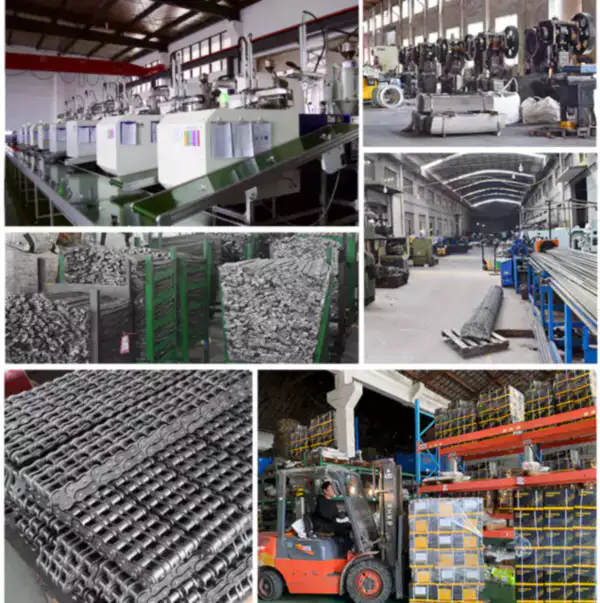Introduction
In this blog post, we will explore the impact of chain stretch on gripper chain systems. Chain stretch is a phenomenon that can occur over time due to various factors, such as heavy loads, improper maintenance, and wear and tear. Understanding the effects of chain stretch is crucial for ensuring the optimal performance and longevity of gripper chain systems.

1. The Importance of Proper Chain Tension
Proper chain tension is vital in gripper chain systems to maintain optimal operation. When a chain stretches, it can result in slack or excessive tension, which can affect the overall performance and efficiency of the system. Maintaining proper chain tension ensures smooth movement, reduces the risk of chain derailment, and prevents premature wear and damage to the chain and sprockets.

2. Causes of Chain Stretch
Chain stretch can be caused by several factors, including heavy loads, high-speed operation, inadequate lubrication, and improper tensioning. The combination of these factors can lead to elongation of the chain links, resulting in chain stretch. Regular inspection and maintenance are essential to identify and address these causes promptly to minimize chain stretch and its impact on gripper chain systems.

3. Effects of Chain Stretch on Gripper Chain Systems
When chain stretch occurs in gripper chain systems, it can lead to various adverse effects. These include decreased gripping precision, reduced load-carrying capacity, increased noise and vibration, and accelerated wear of chain and sprockets. These effects can significantly impact the productivity and efficiency of the gripper chain system, leading to increased downtime and maintenance costs.
4. Mitigating Chain Stretch
To mitigate the impact of chain stretch on gripper chain systems, regular maintenance and proper tensioning are crucial. Regular lubrication and inspection help minimize friction and wear, preventing excessive chain stretch. Additionally, implementing proper tensioning techniques and using high-quality gripper chains with excellent resistance to stretch can significantly reduce the occurrence and effects of chain stretch.
5. Purchasing Guide for Gripper Chains
| Factors | Considerations |
|---|---|
| Load Capacity | Choose gripper chains that can handle the required load without excessive strain. |
| Material | Select gripper chains made from durable materials that offer excellent resistance to wear and corrosion. |
| Tensioning System | Consider gripper chains that are compatible with the tensioning system used in your specific application. |
| Size and Length | Ensure the gripper chains are suitable for the dimensions and requirements of your gripper system. |
Sprockets for Gripper Chains
Sprockets play a crucial role in gripper chain systems as they provide the necessary engagement and drive for the chains. They work in conjunction with gripper chains to ensure smooth and efficient operation. Our company offers a wide range of sprockets specifically designed to complement gripper chains, ensuring optimal performance and compatibility. Check out our grip chain sprockets below:

Our Advantages
- 1. High-Quality Manufacturing – We are a trusted manufacturer of gripper chains, ensuring excellent quality and precision in every product.
- 2. Customization Options – We offer a range of customization options to meet specific customer requirements and applications.
- 3. Competitive Pricing – Our gripper chains are competitively priced, providing exceptional value for our customers.
- 4. Fast Delivery – We prioritize prompt delivery to minimize downtime and meet customer deadlines.
- 5. Excellent Customer Support – Our dedicated customer support team is available to assist with any inquiries or concerns.

Q&A
Q: Can chain stretch be completely prevented in gripper chain systems?
A: While it is not possible to completely prevent chain stretch, proper maintenance, regular inspection, and tensioning can help minimize its occurrence and impact on gripper chain systems.
Q: How often should gripper chains be inspected for chain stretch?
A: It is recommended to inspect gripper chains for chain stretch at regular intervals, depending on the operating conditions and frequency of use. On average, inspection every three to six months is a good practice.
Q: Can chain stretch lead to chain failure?
A: Yes, chain stretch can lead to chain failure if left unaddressed. Excessive chain stretch can cause the chain to derail, break, or lose its gripping functionality, resulting in system downtime and potential damage to other components.
Edited by Zqq.
